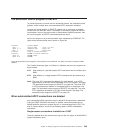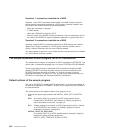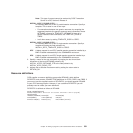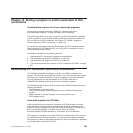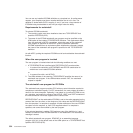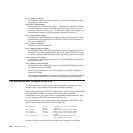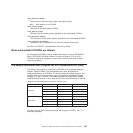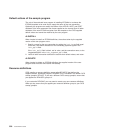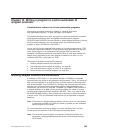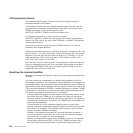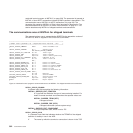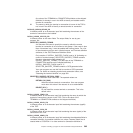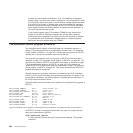
isaic_function (Input)
The function for which the user program has been invoked:
X'F1' After deletion of an IPCONN.
isaic_ipconn (Input)
The name of the autoinstalled IPCONN.
isaic_applid (Input)
The applid (of the remote system) specified on the autoinstalled IPCONN.
isaic_networkid (Input)
The network ID (of the remote system) specified on the autoinstalled IPCONN.
isaic_tcpipservice (Input)
The name of the TCPIPSERVICE on which the connect flow arrived.
All fields in the DELETE communications area are input-only.
When autoinstalled IPCONNs are deleted
An autoinstalled IPCONN is always deleted when they move to the RELEASED
state. A RELEASED IPCONN continues to exist only when a CICS to CICS
IPCONN is restored at emergency restart, when it waits for reacquire to allow
recovery processing.
The sample autoinstall user program for IPIC connections (IPCONN)
The default user program for autoinstall of IPCONNs is an assembler-language
program called DFHISAIP. The corresponding copy book that defines its
communications area is DFHISAIC. The source code of the default program, and
the copy book of its communications area, are supplied in assembler-language,
COBOL, PL/I, and C versions. The supplied programs and copy books, and the
CICSTS32.CICS libraries in which they can be found, are summarized in Table 29.
Table 29. IPCONN autoinstall user programs and copy books
Language Member name Library
Programs
Assembler DFHISAIP SDFHSAMP
C DFHISDIP SDFHC370
COBOL DFHISCIP SDFHCOB
PL/I DFHISPIP SDFHPL1
Copy books
Assembler DFHISAIC SDFHSAMP
C DFHISAIC SDFHC370
COBOL DFHISAIC SDFHCOB
PL/I DFHISAIC SDFHPL1
You can write your own IPCONN autoinstall user program in COBOL, PL/I, C, or
assembler language.
Chapter 13. Writing a program to control autoinstall of IPIC connections 557



